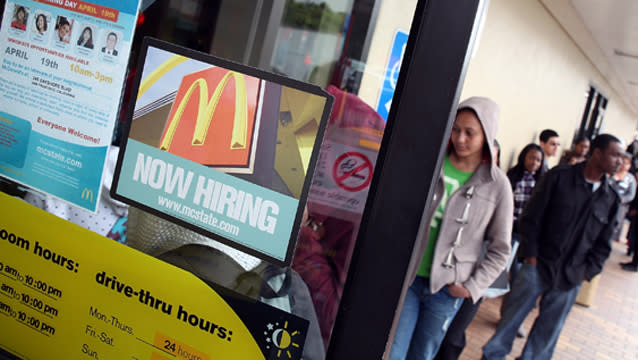“We Have Become a Nation of Hamburger Flippers”: Dan Alpert Breaks Down the Jobs Report

At 162,000, the July jobs report fell short of expectations and well shy of “whisper” numbers for payroll figures above 200,000. In addition, job tallies were revised down for May and June and average hourly earnings fell 0.1% in July, the first decline since October.
The data disappointed Wall Street economists but are consistent with the trends Dan Alpert, managing partner at Westwood Capital, cited in a recent report: “The fact is that the U.S. employment situation is more of a wounded beast than a bull,” he writes.
Related: Jobs & President Obama: A Close Look At His Record
According to Alpert’s analysis, 69% of the jobs created in the second quarter – and 57% in the first half of 2013 – were in the three lowest-paying sectors of the economy: retail trade, administrative and waste services, and leisure and hospitality. These jobs, which account for 33% of all private sector jobs, pay an average of $15.80 per hour.
“What you’re seeing is now the spreading of low wage growth,” he says, noting those trends continued in Friday's July jobs report. “Really we have become a nation of hamburger flippers, Wal-Mart sales associates, barmaids, checkout people and other people working at very low wages.”
The growth of low-wage jobs helps explain why the majority of Americans continue to believe the economy is in recession, despite a falling unemployment rate – now down to a four-year low of 7.4% – a record-setting stock market rally and a rebound in the housing market.
Related: $2 Trillion Shadow Economy Not Counted in Jobs Numbers
Taking it a step further, Alpert says the low-wage trend also explains why GDP growth remains so weak despite monthly average private sector job growth of nearly 200,000 in the past year.
“The bottom line is a lot of people are coming off unemployment,” which works out to around $12 per hour if you include Food Stamps, he says. “So a $15 wage to work has no impact… you’re not increasing consumption or the ability [of workers] to go out and buy stuff."
As a result, the economy isn't getting the usual "second derivative" benefit of payroll growth whereby more people working leads to more economic activity and additional job creation, Alpert says. "That’s why GDP and retail sales numbers are so lackluster.”
Check the accompanying video to see more analysis of the data and what it means for Fed policy.
Aaron Task is the host of The Daily Ticker and Editor-in-Chief of Yahoo! Finance. You can follow him on Twitter at @aarontask or email him at altask@yahoo.com

